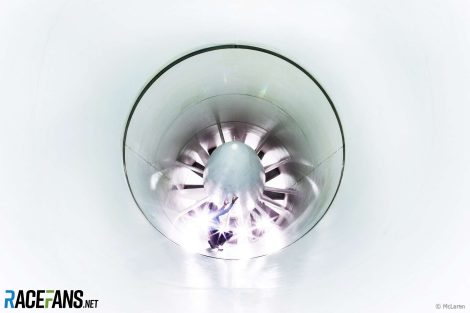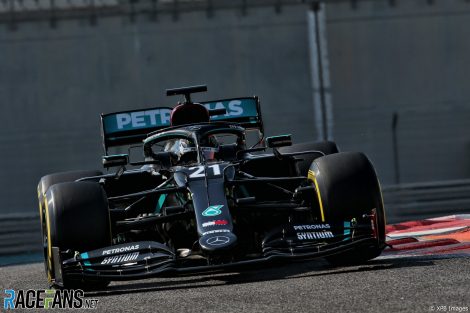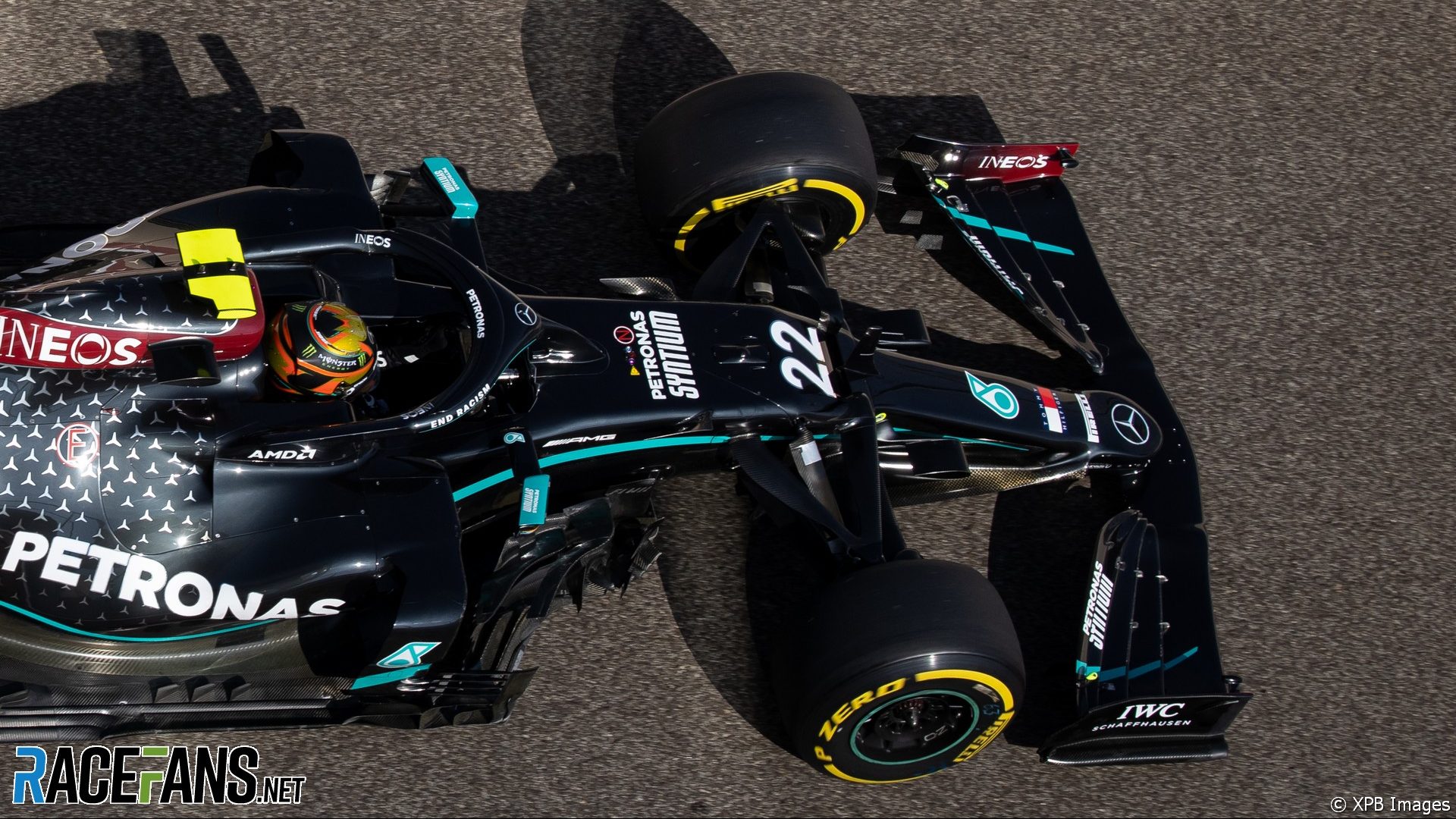Mercedes is striving to minimise the impact Formula 1’s new aero handicap rules will have on its efforts to score an eighth consecutive sweep of both championship titles.
From this year, each F1 team has been set a different limit on how much wind tunnel and computational fluid dynamics (CFD) research it can conduct, based on their finishing positions in last year’s constructors championship.“We have for many years now been limited in the amount that we were allowed to use the wind tunnel and the CFD,” explained Mercedes technical director James Allison. “The limit in the past has always been the same for all competitors whereas for 2021 that has changed and now we get a different allowance depending on how successful we were in the previous season.”
Having won the championship last year, Mercedes have the lowest allocation, while last-placed Williams have the most development time.
“Basically the last-placed team in 2020 is allowed [in] their wind tunnel about 20% more than the first-placed team and everyone in between is on a sliding scale between that 20% and what the first-placed team gets.

Allison said Mercedes has carefully studied how they can gain the most benefit from their reduced development allocation.
“For us the challenge has been, how do we react to this new regulation in the most positive way? How can we make sure that we don’t get tripped up by it?
“There the challenge has been, if we are not allowed to use as much of our wind tunnel and our CFD as we were previously, how could we adapt our world so that we get more and more out of every single opportunity in that wind tunnel?
Advert | Become a RaceFans supporter and
“[If] we’ve only got one run in the wind tunnel, let’s make that run as valuable to us as possible. If we are only allowed to do a small amount of CFD calculation, let’s make it so that the methodology and approach to those CFD calculations are as valuable as possible.
“We’ve tried to adapt our approach to this, so we mitigate and maybe even completely offset the effect of this reduction in the amount that we are allowed to use these fundamental tools.”

Allison revealed the rise in the minimum weight limit for 2021 has also had unexpected consequences for Mercedes. As the team were already below the previous weight limit, they have had to consider the most effective way of carrying more weight this year.
“The cars have got a little bit heavier over the winter,” he said. “The tyres, these more durable, more effective tyres, are a little bit heavier as a consequence of bringing that durability. Furthermore there was also a weight increase on the chassis permitted for 2021.
“Overall, the cars are about six kilos heavier than their predecessors and we’ve had to figure out how to make use of that additional weight. We were lucky enough that we were one of the cars that was below the 2020 weight limit and so when the weight limit was raised for 2021 by the three kilos that were not associated with the tyres it was our challenge to try to figure out how can we invest into our car that three kilos to get maximum performance from it.”
Advert | Become a RaceFans supporter and
2021 F1 season
- Verdict on error in GT race suggests Mercedes would have lost 2021 Abu Dhabi GP appeal
- Title ‘stolen’ from Mercedes made us ‘underdogs people cheer for’ – Wolff
- Red Bull Racing spent £230m during Verstappen’s title-winning 2021 campaign
- ‘I can’t box?’: Hamilton and Verstappen’s 2021 Abu Dhabi GP radio transcript
- Abu Dhabi’s legacy one year on: How the controversial 2021 finale changed F1





Jere (@jerejj)
27th January 2021, 11:46
I’m a little confused by the last paragraphs. How could they have been ‘below’ the weight limit and not get disqualified, or have I misunderstood something? Also, the six-kilo reference was somewhat misleading at first, but at least the three-kilo reference (746 to 749) was mentioned.
Biskit Boy (@sean-p-newmanlive-co-uk)
27th January 2021, 11:49
It means without additional ballast to make up to minimum weight, the finalised car would have been under the weight limit.
This is an advantage. Then you can then choose where to add that ballast to best effect.
Jere (@jerejj)
27th January 2021, 15:50
@sean-p-newmanlive-co-uk @stefmeister
Thank you for the clarification. I should’ve realized immediately, not that I wasn’t aware of the Ballast thing before.
StefMeister (@stefmeister)
27th January 2021, 11:58
@jerejj Not that uncommon for a car to be below the minimum weight limit with teams they using ballast to bring the weight back up to meet the regulations.
The benefit to this is that they can move the ballast around which can help improve the cars weight distribution & centre of gravity.
Tifoso1989 (@tifoso1989)
27th January 2021, 11:58
The percentage of current aero testing allowed for 2021 and 2022-2025 for the 10th placed or new team, Williams in this case, is 112.5% and 115% respectively.
Dave
27th January 2021, 14:23
@tifoso1989 Not sure exactly what you’re getting at, but by my calculations it’s 25% more than the first-placed team in 2021 and then jumps up to an extra 64% for the tenth place team compared to the top constructor from 2022-2025
Tifoso1989 (@tifoso1989)
27th January 2021, 14:45
Dave,
First placed team, Mercedes, will get 90% and 70% of wind tunnel testing for 2021 and 2022-2025 respectively which is 22.5% and 45% less than last placed team.
mystic one (@mysticus)
30th January 2021, 2:25
bigger question is how they are gonna clock and maintain/force order of use… its not like fia will have someone at wind tunnel 7/24 waiting counting clocking in case an f1 car comes… this is indoor use, unlike a test track which can be observed…
Wellbalanced (@alloythere)
27th January 2021, 13:03
I somehow feel that the new sliding scale aero regs won’t have much of a noticeable effect on the front- the difference in development time between the top three teams, say, is relatively marginal.
Also, a shame to hear the cars, which are already far too heavy, are getting heavier. Can anyone recall how much lighter the 2022 new-regs cars will be? Something closer to c. 2005 weight levels would be excellent
StefMeister (@stefmeister)
27th January 2021, 15:27
@alloythere Pretty sure the 2022 cars will be slightly heavier.
vjanik (@vjanik)
27th January 2021, 15:41
The minimum weight limit for 2022 is not lower but higher at 778kg (30kg more). Sorry dude. I feel your pain.
Jere (@jerejj)
27th January 2021, 15:51
@vjanik 775, but close enough.
Wellbalanced
27th January 2021, 16:41
Thanks all for the replies.
Heavier?? I’m anticipating some pretty unimpressed drivers on that score.
And it’s not just drivers; fans (me?!) want to see more skittish cars. Great power levels at the moment, but the cars ‘look’ too compliant and planted.
anon
27th January 2021, 17:50
Wellbalanced, the main reasons for that are the increased use of standardised parts (which have a higher minimum component weight) and the switch to 18 inch rims (the increased rim diameter has pushed the weight of the wheels up as well).
Sean
27th January 2021, 17:52
They’ll look even more compliant and planted with the new regs bringing in big wheels and softer suspension
MEGATRON M12 (@megatron)
27th January 2021, 15:43
The cars aren’t getting heavier, the tires are getting heavier. The garbage pirelli tires are almost 3x heavier than the last Bridgestone tires. The tires are what are making the cars heavy.
Pozzino (@pozzino)
27th January 2021, 13:49
@alloythere the cars are actually gaining 26kg in the current draft of the 2022 regs (775kg in 2022, 749kg in 2021). This comes almost exclusively due to the new single supplier, larger diameter rims.
HK (@me4me)
27th January 2021, 14:54
Thomson (@fish123)
30th January 2021, 3:29
It will make no difference for 2021 as without major rule changes, Mercedes can simply continue with a slightly improved car and still win the title.
But this might effect the top teams in 2022 with the big rule changes and lack of testing… Those extra wind tunnel days will be crucial like Alonso put it to Renault